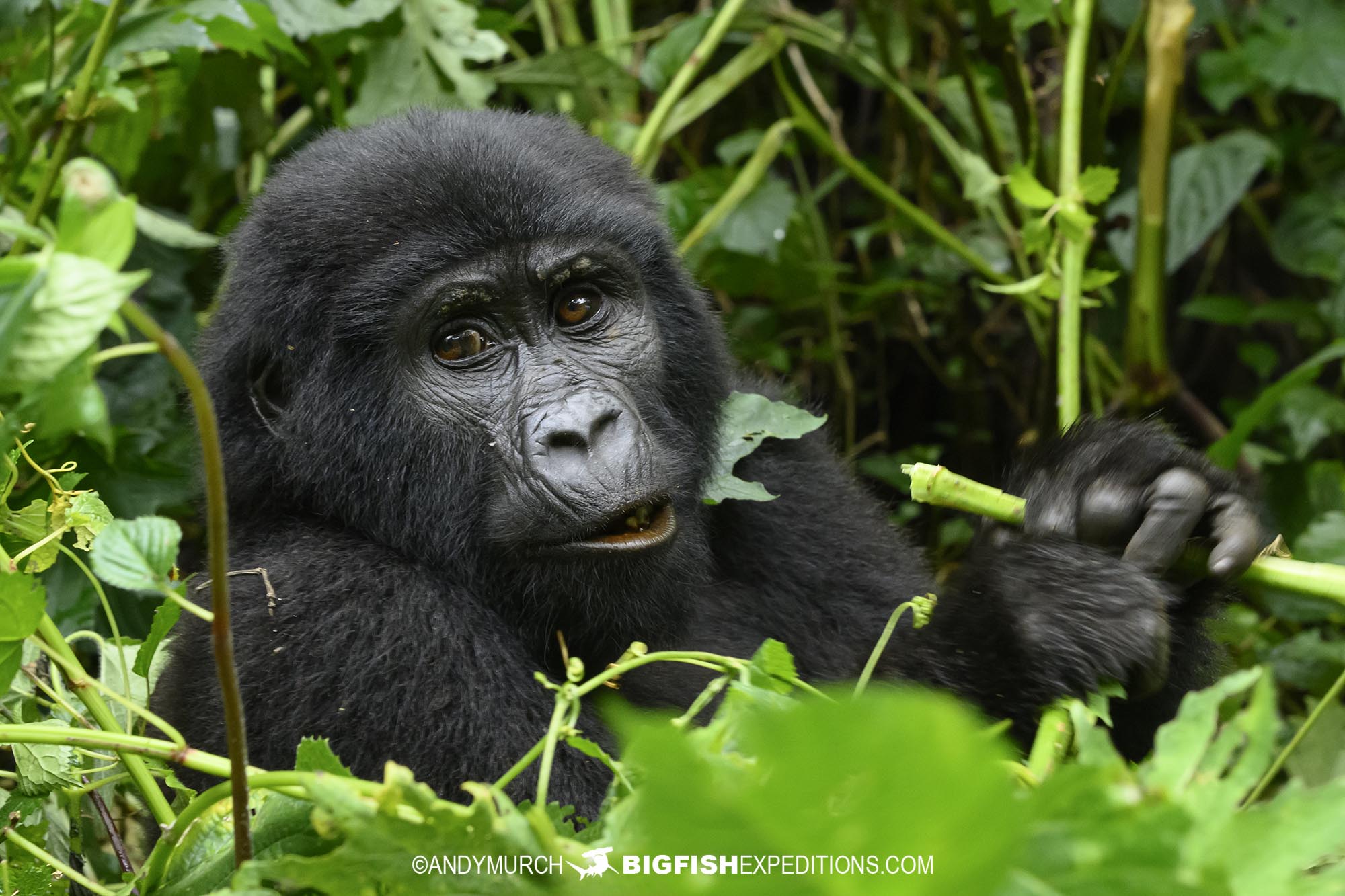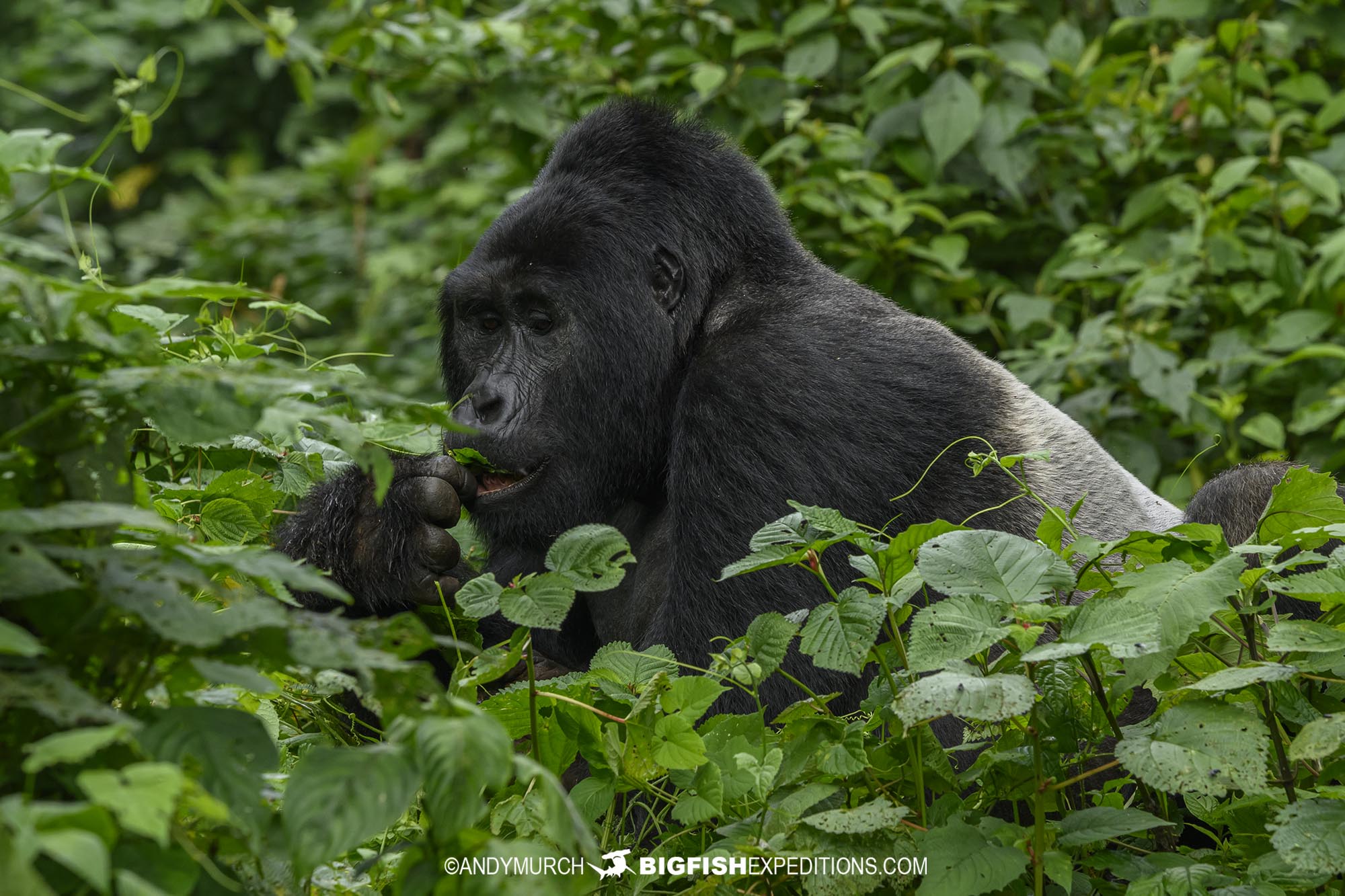
GORILLA TREKKING / PRIMATE SAFARI / BIG FIVE PHOTOGRAPHY ADVENTURE AND MORE!
Another epic Mountain Gorilla and African Safari comes to an end. I am writing this on the journey back to Entebbe from Bwindi where we trekked deep into the ‘impenetrable forest’ to commune with a family of habituated mountain gorillas, but this trip included so much more than just world class gorilla encounters!
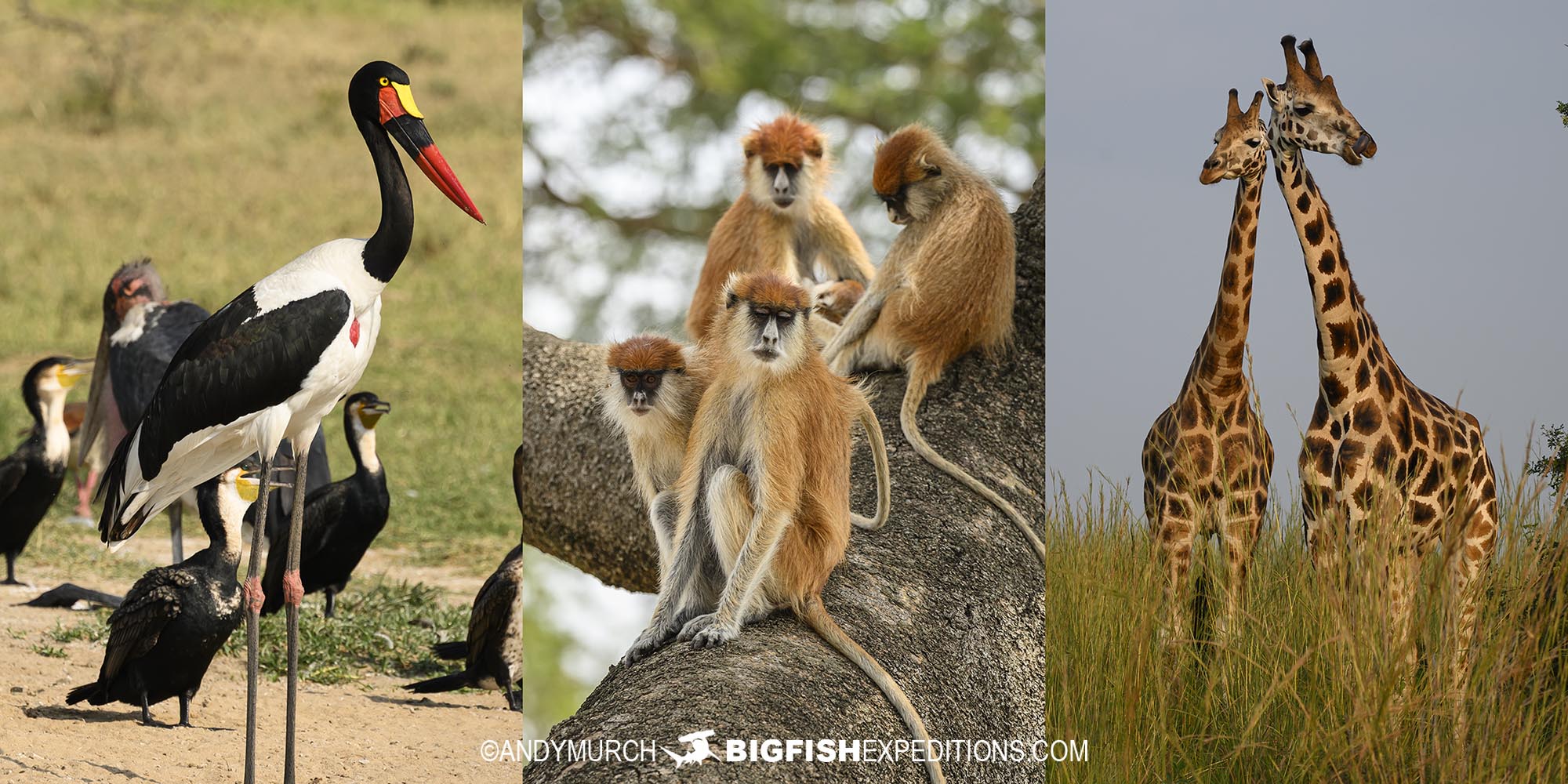
THE JOURNEY NORTH
Our tour of the Pearl of Africa started with the ride north to Murchison Falls National Park to see the incredible density of iconic African wildlife in that enormous savannah dominated park. On route, we stopped at Ziwa Rhino Sanctuary where we walked in the bush in the company of white rhinos. Due to the tireless work of Ziwa’s trackers to eradicate poaching, the park currently holds 48 rhinos, many of which were born there. Later this year the first rhinos will be relocated to Murchison Falls, as park of the Ugandan Wildlife Authority’s ambitious plan to slowly repopulate Africa with white rhinos.
Before checking into our lodge in Murchison Falls, we visited the falls themselves, which have the greatest flow rate of any waterfall on earth.
INCREDIBLE MURCHISON FALLS NATIONAL PARK
Early the next morning, we crossed over to the northern quadrant of the park which is home to an estimated 40,000 Ugandan Cob (similar to impala), 10,000 cape buffalo, thousands of elephants and giraffes, water bucks, and oribis (tiny antelopes), as well as many lions, leopards,and hynenas. Murchison is also home to a large population of long-limbed Patas Monkeys; the fastest primates on earth, capable of running at more than 50km/h over short distances.
After a quick break to freshen up and eat dinner at the lodge, we reurned to the park for a night drive to watch the lions on the hunt for their breakfast.
ONWARD TO KIBALE
The next morning, we drove southwest across Uganda and then up into the dry forest highlands of Kibale National Park; the primate capital of Africa! That evening we went for a night walk to look for gallegos and pottos; both are tiny nocturnal primates that are challenging to photograph, but fun to watch as they bounce from tree to tree in the darkness.
The following morning, we walked deep into the forest with local trackers to catch up with a group of Chimpanzees as they foraged for food. Kibale is home to one of the largest chimpanzee communities in the world. It was an amazing feeling falling into step behind the chimps as they walked through the forest; it felt like we were part of the troop.
SWAMP MONKEYS
That evening we went out for another night walk with the tiny night monkeys. The following morning, local trackers took us to a dry swamp where we were able to find four more species of monkeys including redtail monkeys (arguably the prettiest monkeys in this part of Africa), vervet monkeys which were extremely comfortable around us and came within arms reach before darting away again, illusive Guereza black and white colobus monkeys which stayed high up in the forest canopy, and Ashy red colobus monkeys which are endemic to Kibale.
BANDED MONGOOSES
In the afternoon we continued south to Queen Elizabeth National Park, squeezing in a late afternoon game drive before relaxing at the lodge.
The next morning, we did another game drive in the north end of the arid park, which is covered in giant candelabra cactus trees and towering acacias, then we stopped for lunch at a village that is home to a habituated family of banded mongooses.
THE AMAZING KAZINGA CHANNEL
After lunch, we continued down to the Kazinga Channel; a meandering 40km long river that flows between Lake George and Lake Edward. The channel overflows with an incredible amount of wildlife that comes to the river to quench their thirst in the late afternoon heat.
Rafts of hippos and huge Nile crocodiles are always present and there is an incredibly variety of birds from tiny pied kingfishers to pterodactyl-sized saddle-billed storks and flocks of great white pelicans.
After our ride on the Kazinga one of our guests commented that he did not think it could possibly be as good as I said it would be, but it was even better!
PANGOLINS
The next morning, drove south towards Bwindi, but it was more than just a travel day. Queen Elizabeth National Park is vast, so we drove with the roof up and photographed elephants and monkeys all morning before exiting the southern boundary of the park around lunch time.
In the afternoon, we drove up into the hills towards Bwindi Impenetrable Forest for the main event! On the way, we stopped at a Pangolin Rescue Centre and spent a fun hour filming white-bellied pangolins in scrubland next to the centre. Over the last six years, the centre have rescued and released more 170 wounded or confiscated pangolins back into the wild; a great achievement for this bizarre little dragon-like mammal that is hunted illegally for use in Chinese traditional medicine.
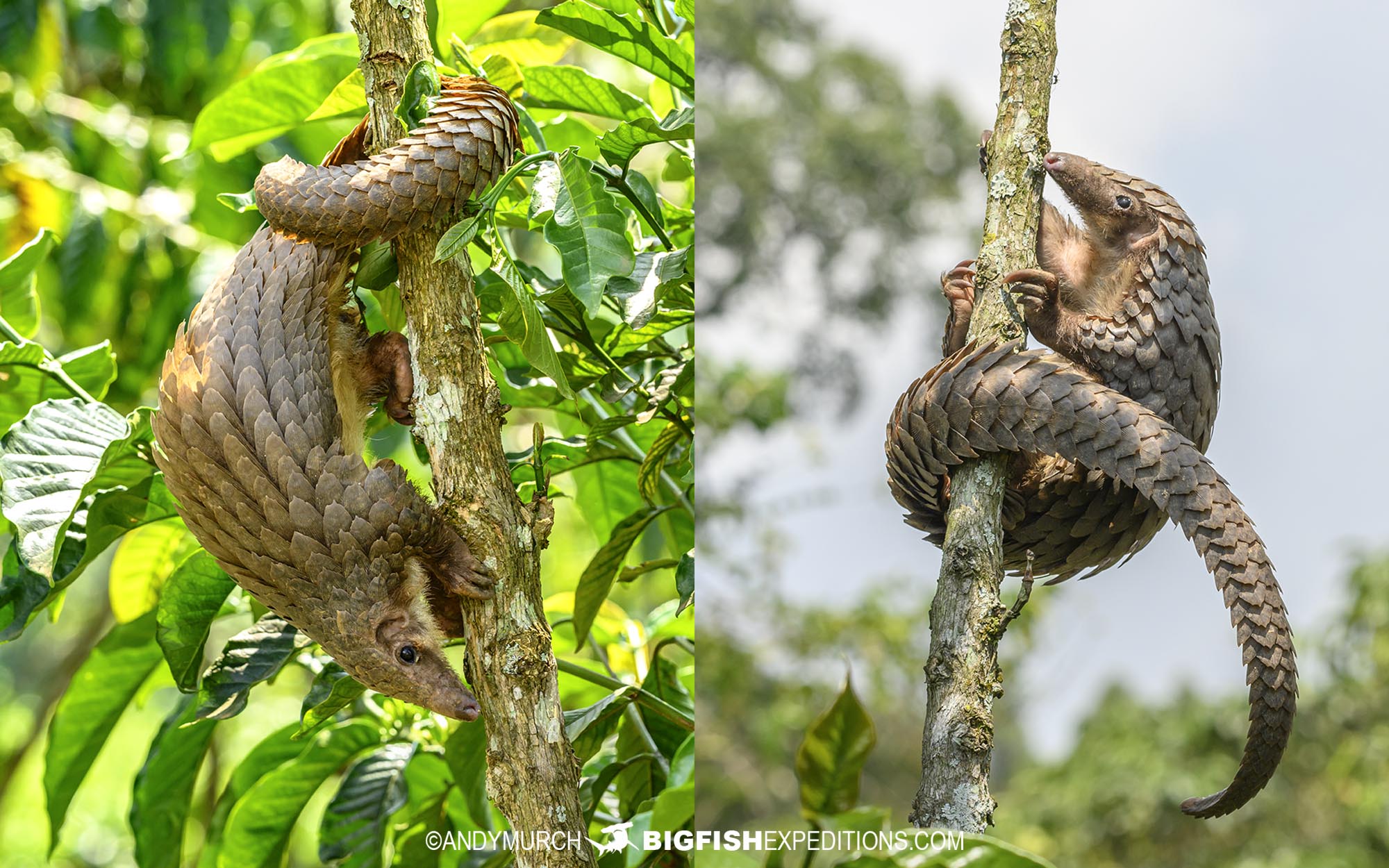
MEET MUYAMBI
From the balcony of our final lodge, the view of Bwindi Impenetrable Forest was daunting, but the next morning after a hearty breakfast we tightened our hiking books and worked our way up switchback trails to the top of the mountain. After two hours of steep, demanding trails, the advance trackers informed us that we were close to Muyambi Gorilla Group; one of six habituated families of eastern mountain gorillas in this part of the forest.
The encounter was nothing short of breathtaking! We first stumbled across Muyambi himself; the dominant silverback. He was very relaxed, allowing us to watch him from just a couple of meters away, while he sat munching on shoots and leaves in a clearing in the forest.
Around him were single females, mothers with closely guarded babies, and young males, but one particularly playful juvenile stole the show until he wore himself out and settled down for a nap; adorable!
THE ROAD HOME
That night we celebrated at the lodge and then prepared for the long ride back to Entebbe. On the way north, we stopped over at Lake M’boro to enjoy lunch with Boehm’s Zebras, impala, and yet more vervet monkeys, before crossing the equator back into the northern hemisphere.
As always, Uganda delivered incredible encounters everywhere we went! All told, we saw twelve different primate species as well as an impressive selection of Africa’s iconic mammals and birds.
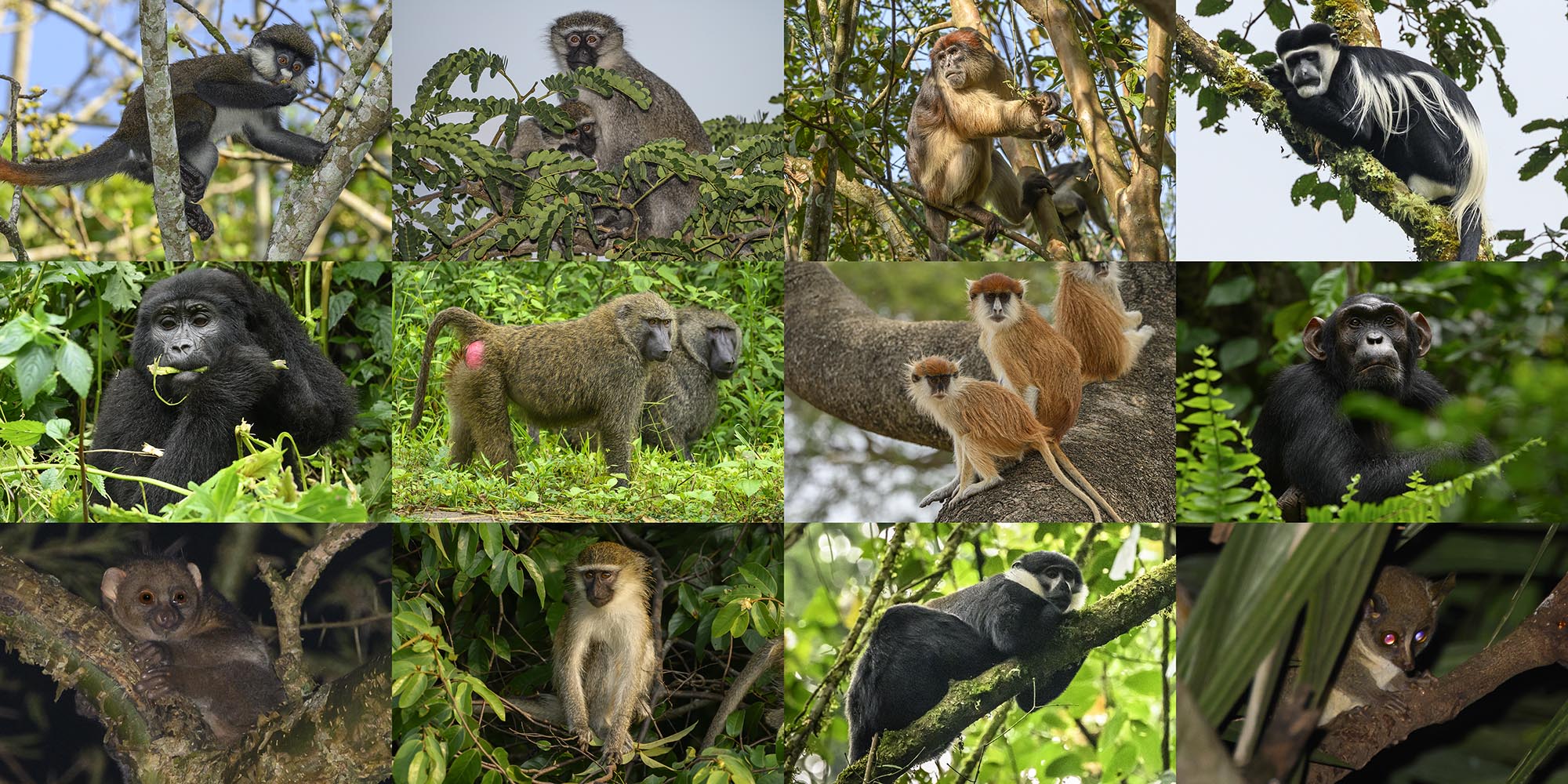
MOUNTAIN GORILLA TREKKING 2026
I will return to Uganda in June 2026 to lead yet another Mountain Gorilla Trekking, Primate Safari, and ‘Big Five’ Adventure. As I write this, the trip has four spots available so I hope that you will join me. I’m sure its going to be another incredible trip! Drop me a line for more info: info@bigfishexpeditions.com
